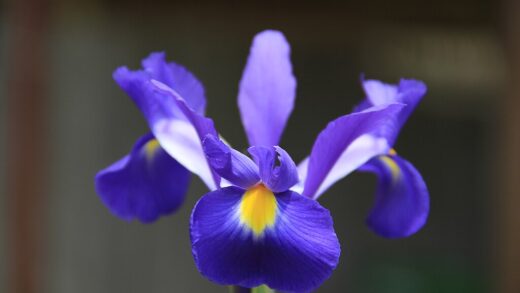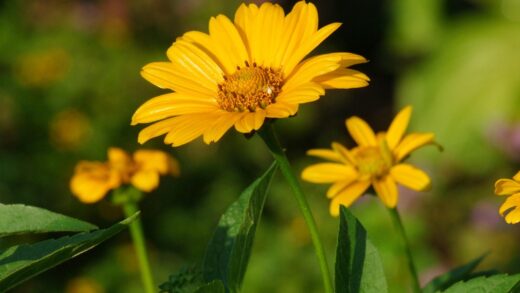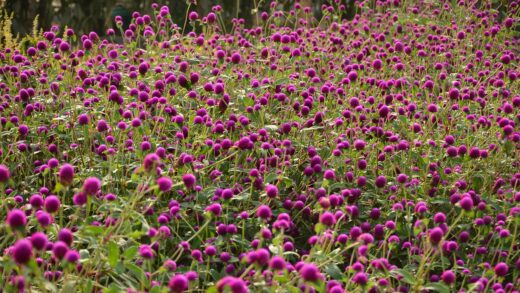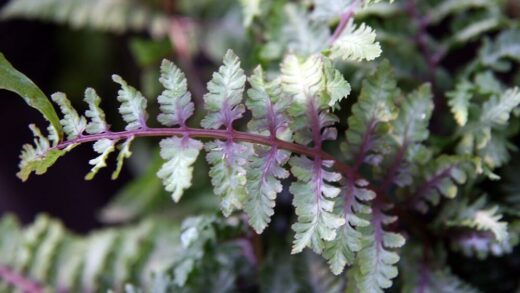While amaryllis are generally robust and relatively trouble-free plants, they are not immune to certain diseases and pests. Proactive care and vigilant observation are the best defenses against potential problems. Most issues can be traced back to environmental factors, particularly overwatering, poor air circulation, or inadequate light, which can weaken the plant and make it more susceptible to attack. Recognizing the early signs of trouble and taking swift, appropriate action is key to preventing minor issues from becoming major threats to the plant’s health. A healthy, well-cared-for amaryllis is naturally more resilient and better equipped to fend off both pathogens and pests.
The most common and serious disease affecting amaryllis is bulb and root rot, a fungal issue almost always caused by excessive moisture in the soil. Pathogens such as Pythium and Phytophthora thrive in anaerobic, waterlogged conditions, attacking the plant’s root system and the base of the bulb. The initial symptoms often appear above the soil, including yellowing leaves, stunted growth, and a general failure to thrive. If you suspect rot, you must act quickly by removing the bulb from the pot to inspect it directly. Healthy roots are firm and white, while rotted roots will be brown, mushy, and may have a foul odor. The base of the bulb may also feel soft and waterlogged.
Another fungal issue that can appear is red blotch, also known as leaf scorch, caused by the fungus Stagonospora curtisii. This condition manifests as red or brownish streaks, spots, and patches on the leaves, flower stalks, and even the outer layers of the bulb. While it can be unsightly, red blotch is often a cosmetic issue and is not typically fatal to the plant unless the infection is severe. The fungus thrives in cool, damp conditions with poor air circulation. It is important to distinguish this disease from the normal reddish pigment that can appear at the base of the leaves, which is not a cause for concern.
Preventing fungal diseases is far more effective than treating them. The cornerstone of prevention is proper watering technique. Always use a well-draining potting mix, ensure the pot has drainage holes, and allow the soil to dry out partially between waterings. Avoid letting the plant sit in a saucer of water and water the soil directly rather than from overhead. Good air circulation around the plant is also crucial. If you encounter rot, you may be able to save the bulb by trimming away all affected tissue with a sterilized knife, treating the cut surfaces with a fungicide, and allowing the bulb to air dry for several days before repotting in fresh, sterile soil.
Common pests
Amaryllis grown indoors are susceptible to several common houseplant pests. Spider mites are one of the most frequent culprits. These tiny arachnids are difficult to see with the naked eye but their presence is often revealed by fine, silky webbing on the undersides of leaves and between the leaves and stems. They feed by piercing plant cells and sucking out the contents, leading to a stippled, yellowed, or bronzed appearance on the leaves. Spider mites thrive in hot, dry conditions, so increasing humidity around the plant can help to deter them.
More articles on this topic
Mealybugs are another common pest that can infest amaryllis. These small, soft-bodied insects appear as white, cottony masses, typically clustered in the leaf axils, on the undersides of leaves, or near the base of the bulb. Like spider mites, they feed on plant sap, which can cause yellowing, distorted growth, and a general decline in the plant’s vigor. Mealybugs also excrete a sticky substance called honeydew, which can lead to the growth of sooty mold, further stressing the plant.
Scale insects are a more insidious pest. There are many varieties, but they generally appear as small, immobile bumps on the leaves and stems. These bumps are actually a hard, protective covering that shields the insect underneath as it feeds on the plant’s sap. They can be difficult to control because their waxy armor protects them from many contact insecticides. A heavy infestation of scale can severely weaken the plant over time, leading to yellowed leaves that may drop prematurely.
Thrips are tiny, slender insects that can also attack amaryllis, although they are less common indoors. They feed by scraping at the surface of leaves and flowers and sucking up the exuded sap. This feeding damage often appears as silvery or stippled patches on the leaves and can cause distortion or discoloration of the flower petals. Thrips can also transmit plant viruses, making their control particularly important. Early detection is key for managing all of these pests before their populations become large and difficult to eradicate.
Organic pest control methods
For most common amaryllis pests, organic and non-toxic control methods are often effective, especially if the infestation is caught early. A simple first step is to physically remove the pests. For mealybugs and scale, a cotton swab dipped in rubbing alcohol can be used to dab and dissolve the individual insects and their protective coatings. For a more widespread infestation of spider mites or mealybugs, a strong jet of water from a spray bottle or showerhead can be used to dislodge a significant portion of the population from the plant’s leaves.
More articles on this topic
Insecticidal soap is a widely used and effective organic control for soft-bodied insects like spider mites and mealybugs. These soaps work by disrupting the outer cell membranes of the insects, causing them to dehydrate and die. They are most effective when applied thoroughly, ensuring complete coverage of all plant surfaces, especially the undersides of leaves where pests tend to congregate. Insecticidal soaps have no residual effect, so repeat applications every five to seven days may be necessary to control newly hatched pests.
Neem oil is another powerful tool in the organic pest control arsenal. Derived from the seeds of the neem tree, it acts as a broad-spectrum insecticide, miticide, and fungicide. It works in multiple ways: as a repellent, an antifeedant, and a growth regulator that disrupts the pest’s life cycle. A solution of neem oil mixed with water and a mild emulsifier, like a drop of dish soap, can be sprayed on the plant to control a wide range of pests and can also help to manage fungal issues like red blotch. As with insecticidal soap, thorough coverage and repeat applications are key to success.
Introducing beneficial insects can be an effective biological control method, particularly in a greenhouse setting or for a large collection of houseplants. Predatory mites, for instance, are natural enemies of spider mites and can be released onto infested plants to control the pest population. Similarly, ladybugs and lacewing larvae have voracious appetites for aphids and mealybugs. This approach creates a more balanced ecosystem and avoids the use of chemical sprays altogether, offering a sustainable long-term pest management strategy.
Chemical treatments
In cases of severe or persistent infestations, it may be necessary to resort to chemical pesticides. When choosing a chemical treatment, it is important to select a product that is specifically labeled for use on houseplants and is effective against the target pest. Systemic insecticides are one option for difficult-to-control pests like mealybugs and scale. These products are absorbed by the plant and move throughout its vascular system, turning the plant’s own sap into a poison for the feeding insects. This method can be highly effective as it reaches pests in hard-to-spray locations.
Contact insecticides, such as those containing pyrethrins or synthetic pyrethroids, work by directly touching the pest. These are effective against a broad range of insects but require thorough application to ensure the spray makes contact with the pests. They often have a quick knockdown effect but may not have a long-lasting residual action, meaning repeat treatments are often necessary to break the pest life cycle. When using any chemical pesticide, it is absolutely crucial to read and follow all label instructions regarding application rates, safety precautions, and personal protective equipment.
When applying any spray treatment, whether organic or chemical, it is best to do so in a well-ventilated area, preferably outdoors if weather permits. Isolate the infested plant from your other houseplants to prevent the pests from spreading. It is also advisable to test the spray on a small, inconspicuous area of the plant first and wait 24 hours to ensure it does not cause any phytotoxic reaction, such as burning or discoloration of the leaves. Avoid spraying plants when they are in direct sunlight or under heat stress, as this can increase the risk of foliage damage.
A multi-pronged approach, often referred to as Integrated Pest Management (IPM), is the most sustainable and effective strategy for long-term pest control. This involves combining cultural practices (like proper watering and providing good air circulation), physical and biological controls (like hand-picking pests or using beneficial insects), and chemical controls (used as a last resort). By using a combination of methods, you can manage pest populations effectively while minimizing the reliance on chemical pesticides and promoting the overall health of your amaryllis.
Disease management and prevention
The most effective strategy for managing diseases in amaryllis is prevention. This starts with sourcing high-quality, disease-free bulbs from reputable suppliers. Before planting, carefully inspect the bulb for any signs of softness, mold, or significant blemishes. A healthy bulb is the first line of defense. Using a sterile potting mix and a clean pot is also essential to avoid introducing soil-borne pathogens from the outset. These initial steps create a healthy foundation for the plant to grow.
Cultural practices play the most significant role in disease prevention. As mentioned, overwatering is the primary cause of rot, so mastering a proper irrigation schedule is paramount. Ensuring good air circulation around the plant helps to keep the foliage dry and discourages the development of fungal leaf spots like red blotch. Avoid crowding plants too closely together. Providing the plant with its ideal light and nutrient conditions will keep it strong and vigorous, making it naturally more resistant to diseases.
If you identify a disease like red blotch, the first step is to improve cultural conditions. Reduce humidity, increase air circulation, and be careful to water only the soil, not the leaves or stalk. You can also remove the most heavily infected leaves to reduce the source of fungal spores. For minor infections, this is often enough to keep the disease in check. In more severe cases, an application of a copper-based or other suitable fungicide, following the label directions, may be warranted to prevent the spread of the disease.
Sanitation is a simple but crucial aspect of disease management. Always use clean tools, such as knives or pruning shears, when working with your plants, and sterilize them with rubbing alcohol or a bleach solution between plants to avoid transferring pathogens. If you have to remove a diseased plant, do not reuse the soil for other plants. By maintaining a clean growing environment and practicing good plant hygiene, you can significantly reduce the risk of your amaryllis succumbing to common diseases, ensuring they remain healthy and beautiful.


















